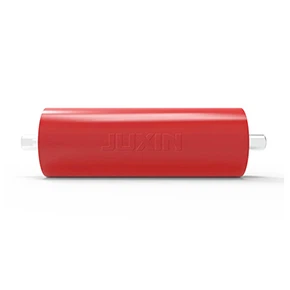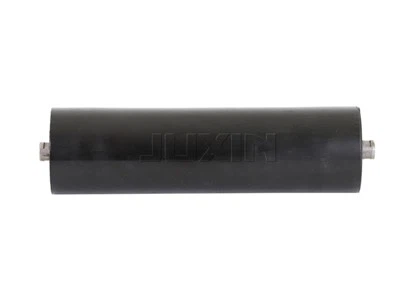In the relentless world of bulk material handling, where efficiency and reliability are paramount, countless components work tirelessly behind the scenes. Among the most fundamental, yet often overlooked, are idler rollers. These unassuming cylindrical devices play a critical role in the smooth, efficient, and cost-effective operation of belt conveyors worldwide. Whether you're managing a mining operation in Australia, a distribution center in Germany, or a manufacturing plant in Thailand, understanding idler rollers is key to optimizing your conveyor performance. This guide delves deep into what they are, how they function, their vital roles, and why choosing the right conveyor idler suppliers is a strategic investment.

What Exactly is an Idler Roller?
At its core, an idler roller is a freely rotating cylindrical component mounted along the frame of a belt conveyor. Unlike the drive pulley that provides the motive power, the idler roller itself is not powered. Its primary function is provide support and facilitate the smooth movement of the conveyor belt.These rollers come in various types (carrying, return,impact, training) and are strategically placed along the conveyor's length to form the "bed" upon which the belt travels. The quality of idler and roller components directly impacts the entire system's lifespan and operating cost. Idlers are typically made from durable materials such as steel or high-strength polymers to endure the harsh operating conditions of industrial environments.
How Do Idler Rollers Work?
The operation of an idler roller is elegantly simple yet profoundly effective:
Support
Idler rollers provide continuous support along the length of the conveyor belt, preventing excessive sagging under the weight of the conveyed material. Carrying idlers support the loaded top strand, while return idlers support the empty bottom strand.
Reduce Friction
By creating a rolling surface, idler rollers drastically reduce the friction between the moving conveyor belt and the stationary conveyor frame. This minimizes the energy required to drive the belt and significantly reduces belt wear.
Shape the Belt
The arrangement of idler rollers (often troughed carrying idlers) helps shape the belt into a trough, increasing its capacity to carry material efficiently and preventing spillage. Proper alignment of idler rollers is crucial for belt tracking.
Absorb Impact
Specially designed impact idler rollers, often featuring rubber discs, are placed at loading zones to absorb the shock and impact of falling material, protecting both the belt and the structure.
Guide the Belt
Training or self-aligning idler rollers are designed to automatically correct minor belt misalignment, preventing costly edge damage and spillage.
The seamless interaction of thousands of these idler rollers for belt conveyors creates a low-friction pathway, enabling the efficient transport of materials over vast distances with minimal energy expenditure. Reliable conveyor idler suppliers ensure rollers are precisely balanced and sealed for smooth, long-lasting operation.
What Essential Functions Do Idler Rollers Perform?
The humble idler roller shoulders a multitude of critical responsibilities within a conveyor system:
Belt Support & Load Bearing
This is their primary function. Idler rollers carry the weight of both the belt and the material it transports, distributing the load evenly across the structure. Robust steel idler rollers are vital for handling heavy loads.
Belt Guidance & Tracking
Properly aligned and functioning idler rollers are essential for keeping the conveyor belt centered on its path. Training idlers actively correct minor deviations, preventing catastrophic mistracking.
Material Containment
Troughed idler sets shape the belt to create a deeper channel, maximizing carrying capacity and preventing material roll-off, especially important for bulk solids like coal, ore, or grain.
Impact Absorption
Protecting the belt at transfer points is crucial. Impact idler rollers absorb the energy of falling material, significantly extending belt life and reducing maintenance downtime.
Belt Cleaning
Return idler rollers, sometimes combined with cleaner blades or specific designs (like spiral rollers), help dislodge carryback material clinging to the underside of the belt, improving cleanliness and preventing buildup.
Reducing Drive Power
By minimizing rolling resistance through efficient bearing and seal design, high-quality idler rollers for belt conveyors directly reduce the horsepower required by the drive motor, lowering energy costs.
Protecting the Belt
Smooth, rotating idler rollers prevent abrasive wear that would occur if the belt slid directly on a stationary frame. They also prevent belt deformation and damage from sharp impacts.
Why Are Idler Rollers So Crucial to Your Operation?
Investing in high-quality idler rollers and sourcing them from reputable conveyor idler suppliers is not an expense; it's a strategic decision impacting your entire bottom line:
Maximized Efficiency & Throughput
Low-friction, well-aligned idler rollers ensure the conveyor belt runs smoothly, minimizing energy consumption and maximizing material movement speed and volume. Efficient idler rollers for belt conveyors directly translate to higher productivity.
Reduced Operating Costs
Lower Energy Bills: Reduced rolling resistance means less power is needed to drive the belt.
Extended Belt Life: Proper support, impact absorption, and tracking significantly reduce belt wear and tear, postponing costly belt replacements.
Minimized Spillage & Cleanup: Effective troughing and tracking reduce material loss and the associated cleanup costs and environmental concerns.
Decreased Maintenance: Durable steel idler rollers with quality seals and bearings last longer and require less frequent replacement, reducing labor and parts costs. Choosing the right idler and roller components is key.
Enhanced System Reliability & Uptime
Premature idler roller failure is a leading cause of unplanned conveyor stoppages. Reliable rollers mean fewer breakdowns and more consistent production flow. Proven conveyor idler suppliers deliver this consistency.
Improved Safety
Properly functioning idler rollers contribute to safer operations by preventing belt mistracking (which can cause fires or structural damage), reducing spillage hazards, and minimizing the need for workers to intervene near moving components.
Versatility Across Industries
From mining and quarrying (heavy-duty steel idler rollers) to ports, power plants, agriculture, and manufacturing, robust idler rollers for belt conveyors are indispensable across countless sectors in both Europe, North America, and Southeast Asia.
Sustainability
Longer-lasting components and reduced energy consumption contribute to a smaller environmental footprint.
Idler Roller:The Foundation of Belt Conveyor
Idler rollers are far more than simple spinning tubes. They are the silent, tireless foundation upon which efficient, reliable, and cost-effective belt conveyor operation is built. Understanding their definition, how they work, their multifaceted functions, and their immense importance is crucial for anyone responsible for material handling systems.
Choosing the right idler and roller specification – considering factors like load, environment, material abrasiveness, and required features like impact resistance or self-alignment – is paramount. Equally critical is partnering with reputable conveyor idler suppliers known for quality manufacturing, durable components (especially steel idler rollers), reliable sealing, and excellent technical support. Investing in premium idler rollers for belt conveyors pays dividends through reduced downtime, lower operating costs, extended equipment life, and maximized productivity.






